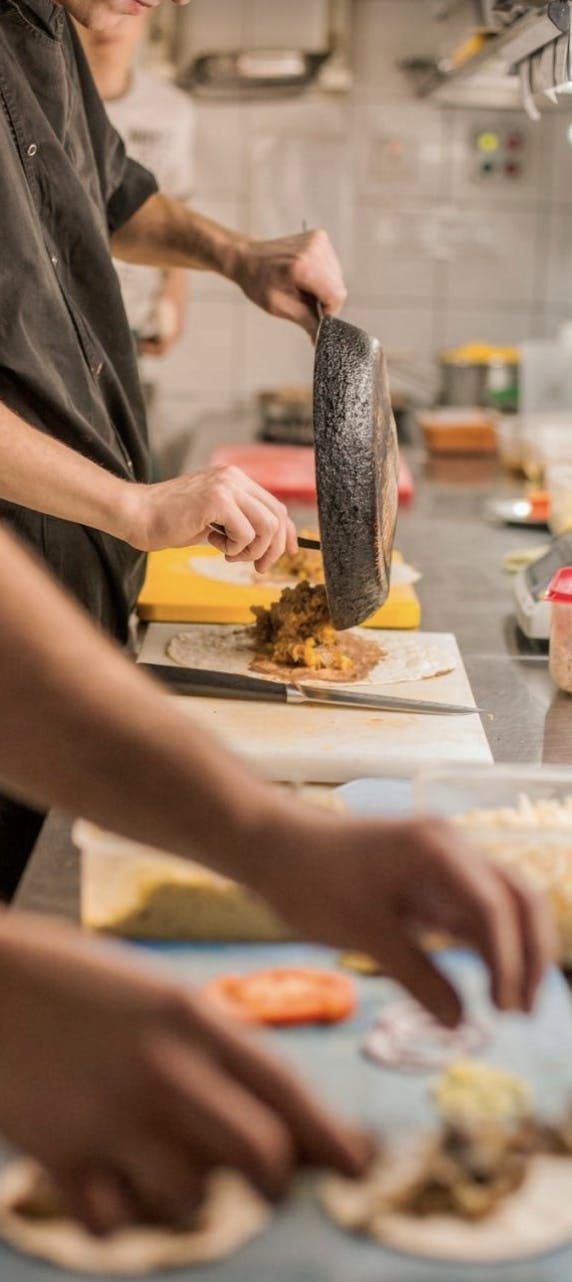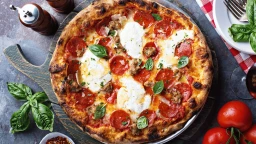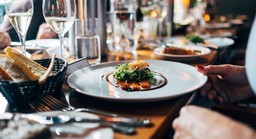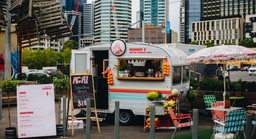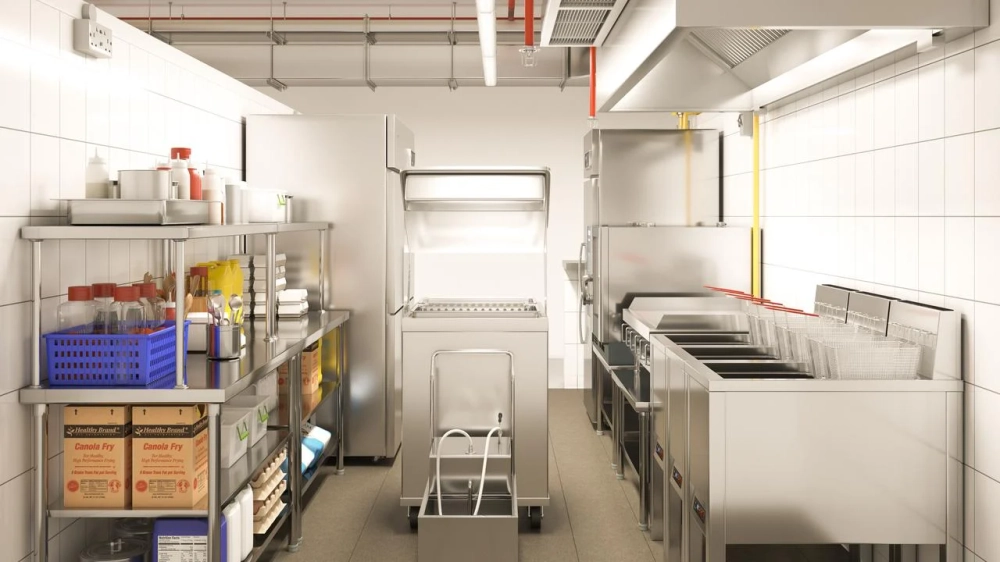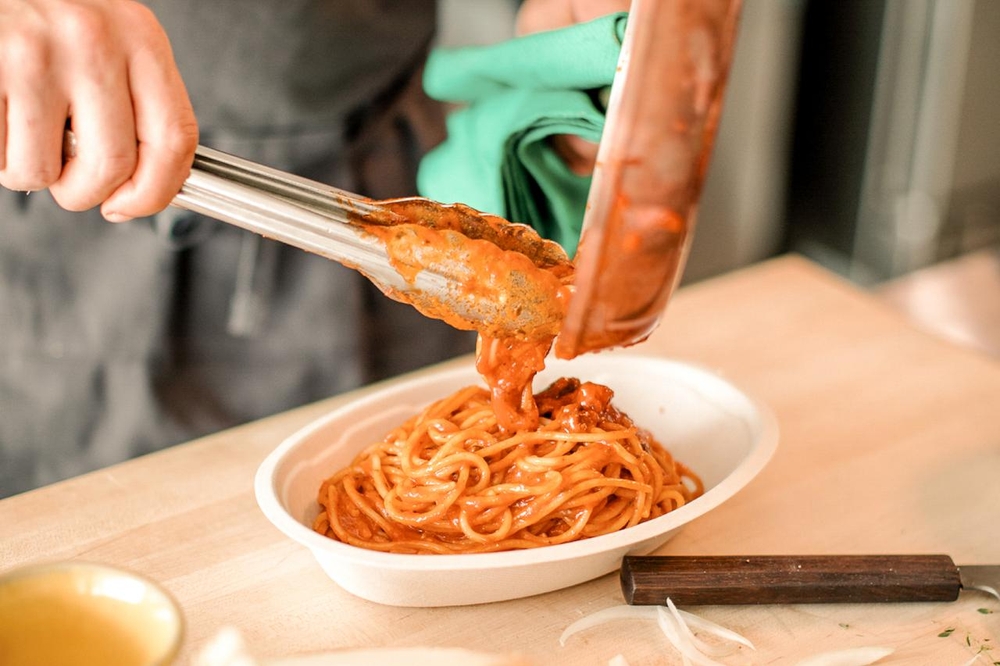20 Different Types of Restaurant: A practical guide for entrepreneurs
Table of Contents
CloudKitchens
How many tacos can be delivered from a 1000sqft restaurant?
The same amount as a 200sqft ghost kitchen.

Starting a restaurant can be a big challenge, so we’ve brought you 20 restaurant types to choose, so you can invest in a new business. Follow us in this complete guide!
A recent survey found that 51% of adults said they’d like to dine out more, and with both revenue and demand on the rise, now is an attractive time to open a new restaurant establishment.
That said, it’s also important to find your niche. Honing your grand ideas into something specific, unique, and goal-oriented can help you find your footing as the owner of a new food service business.
Getting yourself acquainted with different types of restaurants and having a restaurant business plan is also a key component to long-term success.
To that end, it’s important to understand the different types of restaurants and which category yours may fit into.
1. Fast Food / QSR
Fast food restaurants, otherwise known as Quick-Serve Restaurants (QSR), serve on-the-go food via countertops or drive-throughs. Quick turnaround is the name of the game, which is made possible by a standardized menu with every food item cooked as quickly as it’s eaten.
Staples among fast food restaurants include car-ready foods like burgers, burritos, and chicken sandwiches.
In the United States, this quick-service restaurant type is a booming industry, generating $200 billion in average annual revenue. This represents more than one-third of the world’s total fast food revenue of $570 billion.
Some other key findings about fast food include:
- Between 2013 and 2016, nearly 37% of adults consumed fast food on any given day.
- Fast food is even more popular among younger adults, with nearly 45% of adults between 20–39 consuming fast food on any given day.
- Fast food consumption among adults increases with increasing income.
Why is fast food so popular?
Fast food provides advantages for both consumers and restaurant owners. For consumers, a quick-service restaurant is convenient and affordable.
There’s also a sense of familiarity involved, as consumers know exactly what foods they’ll be able to enjoy (and know they’ll taste the same).
A distinct advantage for fast food restaurant owners is the high-profit margins, ranging between 6 and 9%. These numbers are thanks in part to lower costs for ingredients, facilities, and labor within the fast food industry.
Margins are also boosted by soft drink sales, which alone can represent a 90% profit margin. Learn more about 10 franchise opportunities in the states.
Fast food / QSR characteristics:
- Service Style: Mostly counter service; limited personalized table service
- Service time: Fast
- Price point: $
- Examples: Burger King, Pizza Hut, KFC, Subway, McDonald’s
2. Casual dining
Casual dining restaurants are the go-to option for diners who want a slightly more elevated experience without breaking the bank.
Casual dining franchises, as well as independent establishments, are prevalent in the U.S., again providing the familiar, consistent experience that many diners find desirable.
Characteristics of casual dining restaurants often include:
- Table service and a sit-down meal
- Oversized, comfortable seating
- Thematic decor or ambiance
- Larger menus
Olive Garden and Applebee’s were the leading casual dining franchises in 2021, each generating over $4 billion in revenue.
Some prospective restaurateurs might wonder why they should choose a casual dining restaurant over fast food. After all, one of the primary advantages of fast food is the speedy turnaround, which may allow fast food restaurants to serve more customers per day than their casual dining counterparts.
Nonetheless, casual dining still represents a quicker turnaround than more upscale restaurant types, and can often serve more customers at a time by operating in larger spaces.
On top of that, casual dining restaurants have restaurant expansion opportunities to increase profit margins because:
- Consumers are paying for the experience and ambiance as well as the food service.
- The menu can include a wider variety of dishes on the menu, including more expensive selections.
- Consumers on a night out may also pay for alcoholic beverages, appetizers, and desserts.
Casual dining restaurant characteristics:
- Service Style: Full table service
- Service time: Moderate to long
- Price point: $$
- Examples: Applebee’s, Becks Prime, Dickey’s Barbecue Pit, Denny’s
3. Fast casual
One of the more modern types of restaurant concepts, a fast-casual restaurant is a fusion of fast food and casual dining. Fast casual restaurants typically boast a more upscale menu than these establishments, often with healthier or fresher ingredients, while providing the same quick turnaround.
Especially popular among working adults, fast casual restaurants are a convenient lunch option that can adhere to a healthy diet.
Chipotle is the leader among fast-casual restaurants, generating $7.5 billion in revenue in 2021. One of the most interesting trends in Chipotle’s 2021 report is a 24.7% increase in digital sales, which accounted for 45.6% of total sales.
The digital age is revolutionizing the restaurant industry, and a fast-casual dining establishment is a concept that can keep up.
Other promising statistics about fast casual restaurants include:
- Total value is expected to reach $209 billion by 2026. +
- Market growth will accelerate at a compound annual growth rate (CAGR) of 8%.
Fast casual characteristics:
- Service Style: Mostly counter service or limited to no table service
- Service time: Moderate Fast
- Price point: $ to $$
- Examples: Chipotle, Sweetgreen, Panera, Shake Shack, Five Guys, PandaExpress
4. Fine dining
Fine dining establishments stand out by providing an especially luxurious dining experience. This full-service restaurant typically includes features like a sophisticated dining room, exceptional service, and a multi-course menu.
On a day-to-day basis, consumers of fine dining establishments are usually not regulars. Rather, diners may indulge in fine dining to celebrate a special occasion, such as an anniversary or birthday.
As a result, fine dining restaurants are the most competitive from a business point of view. Because they cannot rely on the amount of customers they regularly host, they must rely on the amount their customers spend.
Consequently, customers are far more wary of which fine dining restaurant they may choose. Both diners and owners alike rely on positive reviews.
To cultivate such positive reviews, fine dining restaurants need a superb menu with high-end food preparation, highly professional staff, and an upscale atmosphere. Fine dining restaurants often tend to have very limited menus to ensure quality.
Fine dining characteristics:
- Service Style: Full service at the table and some with wine pairing
- Service time: Moderate-long
- Price point: $$$ to $$$$
- Examples: Yolan, Merois, Providence, Atelier Crenn, Zou Zou’s, Benu
5. Contemporary casual
Contemporary casual restaurants are an offshoot of the fine dining model, catering to a younger demographic that prefers a more laid-back menu and setting. In this model, you have a significant emphasis on both atmosphere and experience.
Successful contemporary casual establishments generally cultivate a brand that aligns with the sensibilities of Millennial and Gen-Z consumers, such as:
- Eco-friendly
- Farm-to-table
- Locally sourced ingredients
- Fusion cuisine
Contemporary casual restaurants typically thrive by catering to modern trends. Part of this includes creating a menu that adheres to the desires of a younger consumer base. Another part of this is becoming their own trend.
In other words, the most successful contemporary casual restaurants are trends in and of themselves. This can be accomplished by:
- Generating a large social media following
- Offering a particular unique menu with visually pleasing food preparation
- Outfitting the dining room with unique decor
- Cultivating a celebrity clientele
- Offering a new experience, such as dark dining
Contemporary casual characteristics:
- Service Style: Full service at the table
- Service time: Moderate
- Price point: $$ to $$$
- Examples: Season 52, Empress by Boon, Mister Jius, Earls Kitchen + Bar, Wildair
6. Pop-up Restaurant
A trending restaurant concept over the last few years, pop-up restaurants are temporary, often mobile, establishments. While food trucks were a catalyst behind the popularity of pop-up establishments, they have since become more stationary.
Pop-up restaurants often take the form of tents, stands, or warehouses. A true pop-up food court may last for only one day, although they can often stick around for an entire season.
From a consumer point of view, pop-ups provide a sense of exclusivity and urgency. Due to their temporary nature, consumers don’t want to miss out on experiencing a new pop-up before it’s gone. This makes pop-ups an exciting concept, providing a unique dining experience for customers.
Hype is the backbone of these restaurants, so for a pop-up restaurant owner, social media marketing is vital to their success.
Similar advantages exist for the chefs and owners of pop-ups, who have the freedom to explore different menus and cuisines. Pop-ups also give chefs the ability to own their own business, as overhead is generally very low.
Pop-up Restaurant characteristics:
- Service Style: Food truck, food stand counter service but some pop-ups have table service
- Service time: Moderate Fast
- Price point: $$ to $$$
- Examples: Saison in SF, Coquine in Portland, Semilla in Brooklyn, Hillside Supper Club in SF, etc.
7. Greasy spoon / Diner
A greasy spoon, or diner, is a quintessential American eatery known for its casual atmosphere and comfort food. Often characterized by a counter with stools, booths, and a menu featuring classic American fare like burgers, pancakes, and hearty breakfast options, it’s a beloved part of the U.S. dining experience.
- Service Style: Full service, no frills
- Service time: Very Fast
- Price point: $ to $$
- Examples: Grilled Cheeserie, The Taco Truck, Fukuburger, Mac Mart Truck, Luke’s Lobster
8. Cafe / Coffee Shop
Cafes hold a special significance for consumers, often tied to rituals like the morning coffee run or casual gatherings with friends. Beyond beverages, cafes may feature a bakery case and offer convenient breakfast and lunch items.
Some cafes have evolved into co-working spaces, catering to remote workers who enjoy sipping their favorite brew while working on laptops. With a focus on coffee and tea, cafes offer a relaxed atmosphere for patrons to linger and socialize.
Cafe characteristics:
- Service Style: Counter service, drive through and almost no table service
- Service time: Fast
- Price point: $ to $$
- Examples: Starbucks, Blue Bottle Coffee, Philz Coffee, Tim Hortons, Dunkin‘
9. Food Truck
Combining elements of both street food and traditional dining, food trucks have ingrained themselves in American culture, numbering over 30,000 across various cities. The food truck trend, underway for over a decade, remains robust, with the industry valued at 2.7 billion dollars in 2017 and likely more today.
This growing market appeals to both seasoned restaurateurs seeking expansion and budding chefs desiring an alternative to traditional eateries.
Read more content about food trucks here:
- How to start a Food Truck?
- How much does it cost to start a Food Truck?
- Food truck licenses and permits in Florida
- Food truck design
Food truck characteristics:
- Service Style: Service via food truck window
- Service time: Fast
- Price point: $ to $$
- Examples: Grilled Cheeserie, The Taco Truck, Fukuburger, Mac Mart Truck, Luke’s Lobster
10. Bistro
Bistros are small, cozy restaurants that provide a laid-back yet refined dining experience. They typically feature simple, elegant meals, often made with fresh, seasonal ingredients.
Bistros are known for their intimate and relaxed ambiance, making them popular in urban settings, often catering to customers who want high-quality food without the formality of fine dining.
They serve traditional European dishes with a modern twist, offering everything from sandwiches to full meals accompanied by wine.
Service Style: Table service
Service Time: Moderate
Price Point: $$
Examples: Balthazar, The Little Owl
11. Pizzeria
Pizzerias are restaurants that specialize in serving pizza, a globally beloved dish. The variety can range from fast, casual take-out or delivery services to upscale establishments that offer wood-fired, artisanal pizzas with gourmet ingredients.
Pizzerias may also offer other Italian staples like pasta, salads, and calzones.
The flexible business model allows owners to cater to different audiences depending on the location and concept.
Service Style: Counter service, delivery, or full table service
Service Time: Fast to Moderate
Price Point: $ to $$
Examples: Domino’s, Pizzeria Bianco
12. Buffet Restaurant
Buffet restaurants offer an all-you-can-eat dining experience, where customers pay a fixed price to sample from a wide variety of dishes. These establishments are often popular for their value and variety, with selections ranging from salads and soups to entrees and desserts.
Buffets can cater to a broad audience, including families, large groups, and budget-conscious diners, making it a versatile and profitable concept for entrepreneurs.
Service Style: Self-service
Service Time: Variable (depends on the customer)
Price Point: $$
Examples: Golden Corral, Hometown Buffet
13. Steakhouse
Steakhouses focus on premium cuts of beef and often cater to an upscale clientele. These restaurants are usually characterized by an elegant dining atmosphere, with a menu featuring steak, seafood, and other hearty dishes.
In addition, many steakhouses have an extensive wine list to complement the rich flavors of their dishes. This type of restaurant is ideal for formal gatherings, business meetings, and special occasions.
Service Style: Full table service
Service Time: Moderate to long
Price Point: $$$ to $$$$
Examples: Ruth’s Chris Steak House, Peter Luger
14. Sushi Bar
Sushi bars offer a specialized dining experience that revolves around fresh sushi and sashimi. Often featuring a counter where skilled chefs prepare dishes in front of diners, these establishments emphasize high-quality ingredients and craftsmanship.
Sushi bars can vary from casual spots to high-end restaurants and are often popular for their light, healthy fare and artistic presentation.
Service Style: Counter service, table service
Service Time: Moderate
Price Point: $$ to $$$
Examples: Nobu, Sushi Nakazawa
15. BBQ Restaurant
BBQ restaurants specialize in slow-cooked meats, often smoked for hours to develop deep, rich flavors. Typical menu items include brisket, pulled pork, ribs, and chicken, along with classic sides like baked beans, coleslaw, and cornbread.
These restaurants are known for their hearty, comfort food appeal and casual, rustic ambiance, and they often have a loyal customer base.
Service Style: Counter service or table service
Service Time: Moderate to long (depending on the cooking style)
Price Point: $$
Examples: Franklin Barbecue, Dinosaur Bar-B-Que
16. Tapas Bar
Tapas bars offer small, shareable plates, encouraging a communal dining experience. These restaurants are usually social and lively, providing a variety of dishes that customers can sample while enjoying drinks.
Tapas are typically Mediterranean or Spanish-inspired, but fusion tapas bars featuring various global cuisines are also popular. These restaurants are ideal for customers who enjoy trying different flavors and dining in a relaxed, social setting.
Service Style: Table service
Service Time: Moderate
Price Point: $$ to $$$
Examples: Jaleo, Casa Mono
17. Rotisserie
Rotisserie restaurants focus on spit-roasting meats, particularly chicken. These establishments emphasize simple, flavorful, and high-quality dishes that are often served with a variety of sides like potatoes, vegetables, and salads.
Rotisserie cooking results in juicy, tender meats with crispy skin, making this type of restaurant a favorite for those seeking a casual but satisfying meal.
Service Style: Counter service, table service
Service Time: Fast to Moderate
Price Point: $ to $$
Examples: Boston Market, Le Coq Rico
18. Noodle Bar
Noodle bars are casual eateries that specialize in noodle dishes from various Asian cuisines, such as Japanese ramen, Vietnamese pho, or Chinese lo mein.
These restaurants cater to the growing demand for fast, flavorful, and comforting meals, with a focus on fresh ingredients, broths, and sauces. Noodle bars are popular among young professionals and foodies looking for a quick but satisfying meal.
Service Style: Counter service, table service
Service Time: Fast to Moderate
Price Point: $$
Examples: Momofuku Noodle Bar, Pho 79
19. Dessert Café
Dessert cafés specialize in offering a wide range of sweet treats, from cakes and pastries to artisanal ice cream. These cafes often feature coffee, tea, and other beverages, making them popular for afternoon breaks or post-dinner indulgence.
Some dessert cafés also allow customers to order customized desserts, making the experience personal and unique.
Service Style: Counter service
Service Time: Fast
Price Point: $$
Examples: Serendipity 3, Dominique Ansel Bakery
20. Ghost Restaurant/kitchen
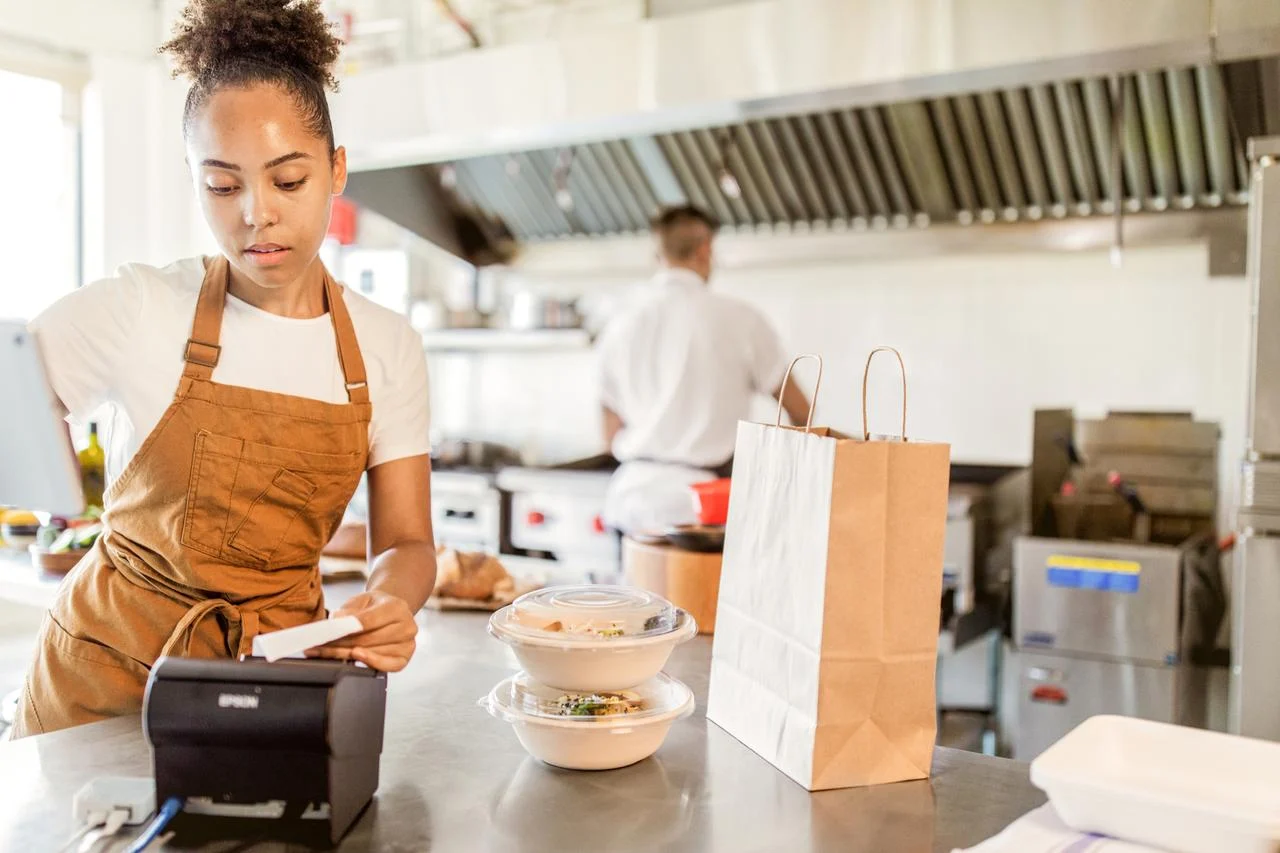
As one of the newest concepts in the restaurant industry, ghost kitchens are virtual, delivery-only restaurants with no storefront. Orders are most often placed online, taking advantage of the $150 billion food delivery industry, which has tripled since 2017.
Third party food delivery apps are the catalyst of this growth, as U.S. delivery app users are expected to hit nearly 54 million by 2023. Ghost kitchens, though, should prove to be an even more significant phenomenon. Some estimates project ghost kitchens to become a trillion-dollar industry by 2023.
The primary advantage of a ghost kitchen business model is the limited overhead. With a ghost kitchen, there’s no need for dining rooms, table service, waiting areas, or parking lots that come with other independent and chain restaurants.
On top of that, a ghost restaurant has a lower cost of labor due to a lower number of employees. All of this can mean a minimal total investment, a quicker launch, and higher profit margins. Best of all, delivery and visibility are often provided by the apps.
Ghost kitchens can thrive with only:
- 200 square feet of real estate
- Four staff members
- $30,000 investment
With the right team in place, a successful ghost kitchen can be launched in as little as six weeks.
Ghost Restaurant/kitchen characteristics:
- Service Style: Delivery or pickup
- Service time: Fast
- Price point: $-$$
- Examples: Check out Uber Eats, DoorDash, and Gruhhub apps.
In summary, here is the overview of all 20 types of restaurants:
| Types | Service | Speed/Time | Price |
| Fast Food (QSR) | Mostly counter service; limited personalized table service | Fast-VeryFast | $ |
| Casual Dining | Full table service | Moderate to long | $$ |
| Fast Casual | Mostly counter service or limited to no table service | Moderate Fast | $ to $$ |
| Fine dining | Full service at the table and some with wine pairing service | Long dining experience | $$$ to $$$$ |
| Contemporary casual | Full service at the table | Moderate | $$ to $$$ |
| Pop-up restaurant | Food truck, food stand counter service but some pop-ups have table service | Moderate Fast | $$ to $$$ |
| Greasy spoon / Diner | Full service, no frills | Fast-Very Fast | $ to $$ |
| Cafe / Coffee Shop | Counter service, drive through and almost no table service | Very Fast; allow pre-ordering | $ to $$ |
| Food Truck | Service via food truck/car window | Fast-Very Fast | $ to $$ |
| Bistro | Moderate | Moderate | $$ |
| Pizzeria | Counter service, delivery, or full table service | Fast to Moderate | $ to $$ |
| Buffet Restaurant | Counter service, delivery, or full table service | Variable (depends on the customer) | $$ |
| Steakhouse | Full table service | Moderate to long | $$$ to $$$$ |
| Sushi Bar | Counter service, table service | Moderate | $$ to $$$ |
| BBQ Restaurant | Counter service or table service | Moderate to long | $$ |
| Tapas Bar | Table service | Moderate | $$ to $$$ |
| Rotisserie | Counter service, table service | Fast to Moderate | $ to $$ |
| Noodle Bar | Counter service, table service | Fast to Moderate | $$ |
| Dessert Café | Counter service | Fast | $$ |
| Ghost Kitchens | Delivery or pickup only, usually no dine-in service | Fast | $-$$ |
History of Restaurant Categories
Before the vast array of dining options we have today, restaurants were simply defined as places where you could sit down and typically be served by a waiter. As time went on and the industry diversified, fast food and take-away (or takeout) establishments emerged.
These new spots didn’t really fit the traditional idea of a sit-down meal.
This evolution led to the need for new ways to categorize restaurants. The original type became known as a “sit-down restaurant,” while counter-service places like fast food joints and take-away spots were given their own distinctions.
It’s worth noting that these were the initial classifications in the United States. Other countries didn’t necessarily follow the same logic. For example, in England, they don’t typically use “sit-down” to refer to restaurants where you eat at a table.
Over there, those places are just called “restaurants” because “take-away” or “fast food” establishments generally aren’t referred to as restaurants.
Start a ghost kitchen today with CloudKitchens
Finding your niche in the restaurant industry and choosing one of the many different types of food restaurants you’ll operate can take some trial and error. Choosing the wrong niche is among some of the reasons why restaurants fail later down the road.
But if you’re looking to launch a ghost kitchen or virtual restaurant, there are tools to help you make the process as smooth and easy as possible—so you can focus on the delicious foods you serve.
CloudKitchens is a full-service culinary partner for budding restaurants and veterans looking to expand their business.
When you go into business with CloudKitchens, we support you to build a successful ghost kitchen, including:
- A private kitchen in a food delivery hub
- Cleaning and maintenance of facilities
- On-site support staff
- Delivery software
- Complete management of delivery logistics and fulfillment
- All utilities, including WiFi, grease/trap cleaning, and pest control
We have locations in most major metropolitan areas in the US and even a ghost kitchen in Toronto! Turn your culinary dreams into reality with CloudKitchens today. Turn your culinary dreams into reality with CloudKitchens today.
Read More
- What is QSR? Understanding Quick Service Restaurants
- Google Ads for Restaurants: Drive More Traffic | CloudKitchens
- 5 Important Elements for Restaurant Branding | CloudKitchens
- Restaurant Marketing: The Ultimate Guide | CloudKitchens
- Restaurant Expansion Strategy For Your Business
| DISCLAIMER: This information is provided for general informational purposes only and the content does not constitute an endorsement. CloudKitchens does not warrant the accuracy or completeness of any information, text, images/graphics, links, or other content contained within the blog content. We recommend that you consult with financial, legal, and business professionals for advice specific to your situation. |
Sources:
- Nation’s Restaurant News. U.S. restaurant sales forecast to hit $898B in 2022, reports National Restaurant Association. https://www.nrn.com/finance/us-restaurant-sales-forecast-hit-898b-2022-reports-national-restaurant-association
- World Population Review. Most Popular Fast Food by State 2022. https://worldpopulationreview.com/state-rankings/most-popular-fast-food-by-state.
- CDC. Fast Food Consumption Among Adults in the United States, 2013–2016. https://www.cdc.gov/nchs/products/databriefs/db322.htm
- Mashed. Where Fast Food Restaurants Really Make Their Money. https://www.mashed.com/69317/fast-food-restaurants-really-make-money/?utm_campaign=clip
- Restaurant Business Online. Top 500: 2021 Was A Mixed Bag For Casual Dining. https://www.restaurantbusinessonline.com/financing/top-500-2021-was-mixed-bag-casual-dining
- Chipotle. Chipotle Announces Fourth Quarter And Full Year 2021 Results. https://ir.chipotle.com/2022-02-08-CHIPOTLE-ANNOUNCES-FOURTH-QUARTER-AND-FULL-YEAR-2021-RESULTS
- QSR Magazine. Fast Casual Restaurants Exit the Pandemic Positioned for Growth. https://www.qsrmagazine.com/outside-insights/fast-casual-restaurants-exit-pandemic-positioned-growth.
- McKinsey & Company. Ordering In: The Rapid Evolution Of Food Delivery. https://www.mckinsey.com/industries/technology-media-and-telecommunications/our-insights/ordering-in-the-rapid-evolution-of-food-delivery
- Restaurant Dive. How the pandemic accelerated the US ghost kitchen market ‘5 years in 3 months’. https://www.restaurantdive.com/news/how-the-pandemic-accelerated-the-us-ghost-kitchen-market-5-years-in-3-mont/585604/
- CloudKitchens. Commercial kitchens built for delivery. https://cloudkitchens.com/commercial-kitchens/
More insights & stories
There’s more where that came from.
Get in the know and check out our additional insights
